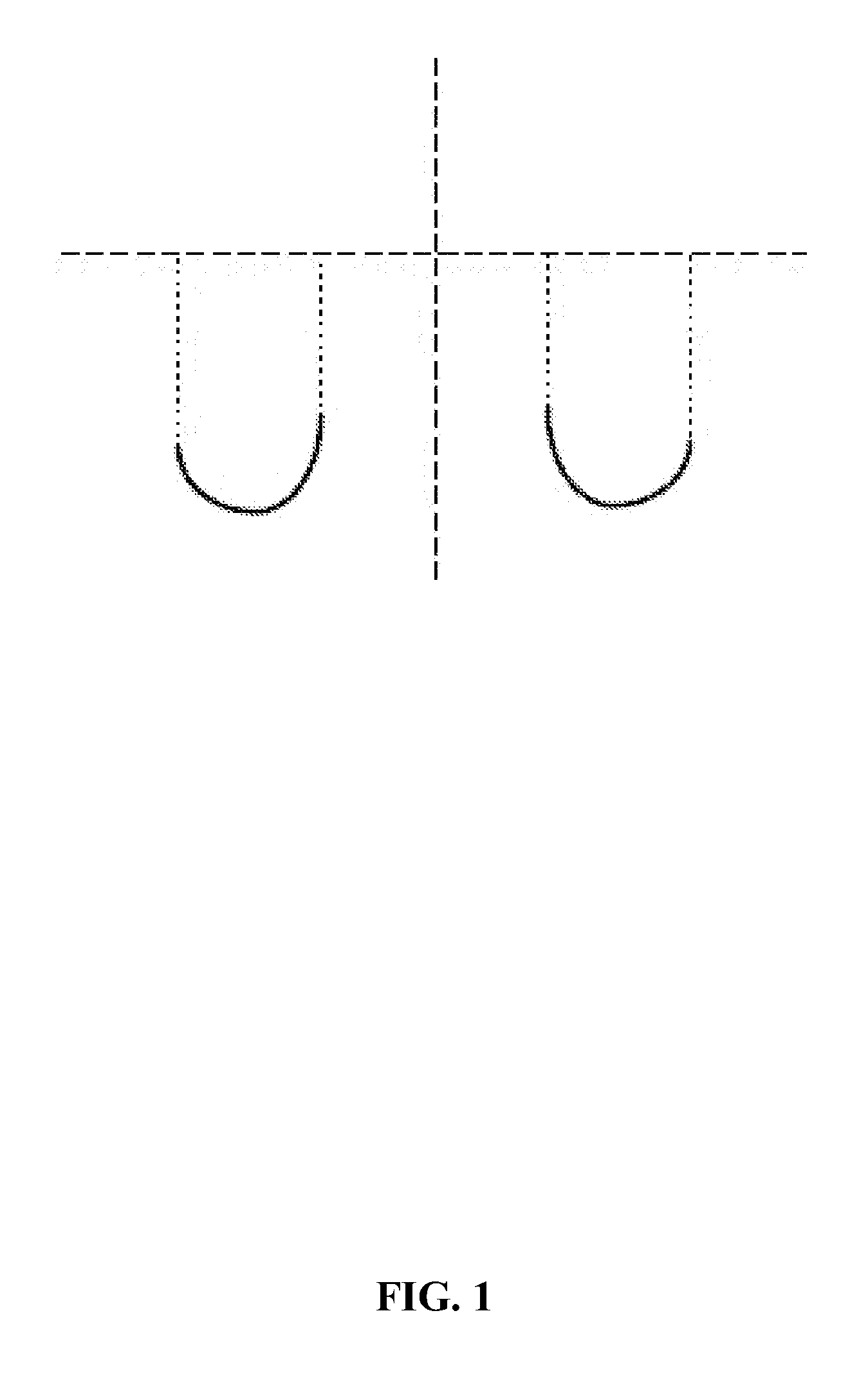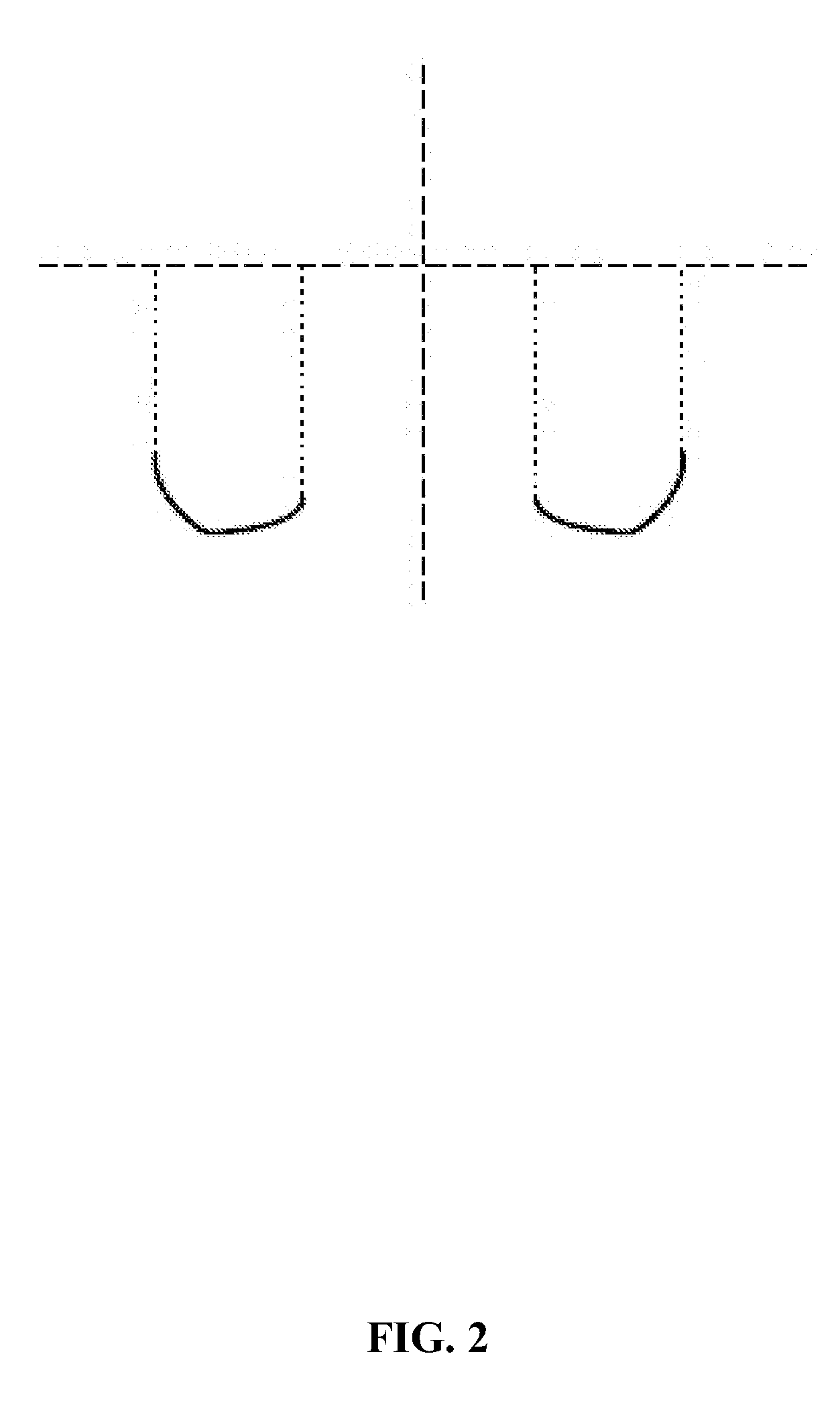Methods for manufacturing optical fiber preform and methods for manufacturing optical fiber
a manufacturing method and technology of optical fiber, applied in the direction of manufacturing tools, glass optical fiber, instruments, etc., can solve the problems of difficult optical fiber connection, high manufacturing cost of optical fiber, difficult to popularize and apply, etc., to achieve high manufacturing efficiency, small additional bending loss, and large outside dimension
- Summary
- Abstract
- Description
- Claims
- Application Information
AI Technical Summary
Benefits of technology
Problems solved by technology
Method used
Image
Examples
example 1
[0080]Optical fiber core rods are prepared with the PCVD process, the used lining tube is a fluorine-doped quartz glass lining tube and prepared with the OVD process. The fluorine-doped quartz glass lining tube is cleaned and fully dried before deposition. The deposited fluorine-doped quartz glass lining tube is melt-contracted into a solid core rod in an electric heating furnace. The core rod is assembled into a preform with a high-purity quartz tube by an RIC process after corrosion, cleaning, and drying, and the main parameters of the preform are shown in Table 1.
TABLE 1Parameters of optical fiber preform of Example 1Parameter of core rod and optical fiber preformIDΔ1 (%)Δ2 (%)a (mm)b (mm)c (mm)d (mm)10.328−0.0559.621.742150.520.355−0.0256.55132710030.348−0.039.321.33915040.35−0.069.782238149.550.355−0.029.3522.64315060.32−0.069.5322.542.514970.334−0.059.722.84515080.335−0.0457.4216.33112090.342−0.03511.225.84517510 0.333−0.05212.528.355.3200.5Fluorine-doped lining tubeJacketingH...
example 2
[0085]During the deposition of an outer cladding layer manufactured by the OVD or VAD process, the pollution to the hydroxyl group of the core rod is obvious due to the use of H2 / O2 flame. When the APVD process is adopted, not only the hydroxyl content of the deposited glass is higher, but also the hydroxyl group in the environment is also absorbed on a target rod and diffused inward; once the hydroxyl group is diffused to the core layer of the core rod, the increase in water peak of the optical fiber will occur, and it mainly determines the diffusion distance and diffusion coefficient whether the hydroxyl group is diffused inward to the core layer of the core rod. The method of increasing the diffusion distance is to increase the c / a value of the core rod. Core rods with different c / a values are manufactured by the same method in the Example 1, outer cladding layers are manufactured by the OVD process and APVD process, and preforms with outer diameter of 145-155 mm are manufactured...
example 3
[0086]Optical fiber core rods are manufactured by the PCVD process. The used lining tube is a fluorine-doped quartz glass lining tube and prepared with the OVD process. The fluorine-doped quartz glass lining tube is cleaned and fully dried before deposition. The deposited fluorine-doped quartz glass lining tube is melt-contracted into a solid core rod in an electric heating furnace. The core rod is assembled into a preform with a high-purity quartz tube by an RIC process after corrosion, cleaning, and drying, and the main parameters of the preform are shown in Table 3.
TABLE 3Parameters of optical fiber preform of Example 3Fluorine-dopeddepressed claddinglayer depositedCore rod parameterby the PCVDΔ1Δ2abcdΔ301ID(%)(%)(mm)(mm)(mm)(mm)(%)10.332−0.0436.2814.92699.5−0.2520.321−0.0587.717.232119.5−0.3230.338−0.039.522.337150−0.540.345−0.039.3721.642.5149.5−0.2650.328−0.0559.4821.242149.5−0.2260.336−0.0511.2525.545181−0.2770.333−0.05612.62957200−0.3Fluorine-doped silica glass lining tubeJa...
PUM
| Property | Measurement | Unit |
|---|---|---|
| thickness | aaaaa | aaaaa |
| outer diameter | aaaaa | aaaaa |
| diameter | aaaaa | aaaaa |
Abstract
Description
Claims
Application Information
 Login to View More
Login to View More - R&D
- Intellectual Property
- Life Sciences
- Materials
- Tech Scout
- Unparalleled Data Quality
- Higher Quality Content
- 60% Fewer Hallucinations
Browse by: Latest US Patents, China's latest patents, Technical Efficacy Thesaurus, Application Domain, Technology Topic, Popular Technical Reports.
© 2025 PatSnap. All rights reserved.Legal|Privacy policy|Modern Slavery Act Transparency Statement|Sitemap|About US| Contact US: help@patsnap.com



